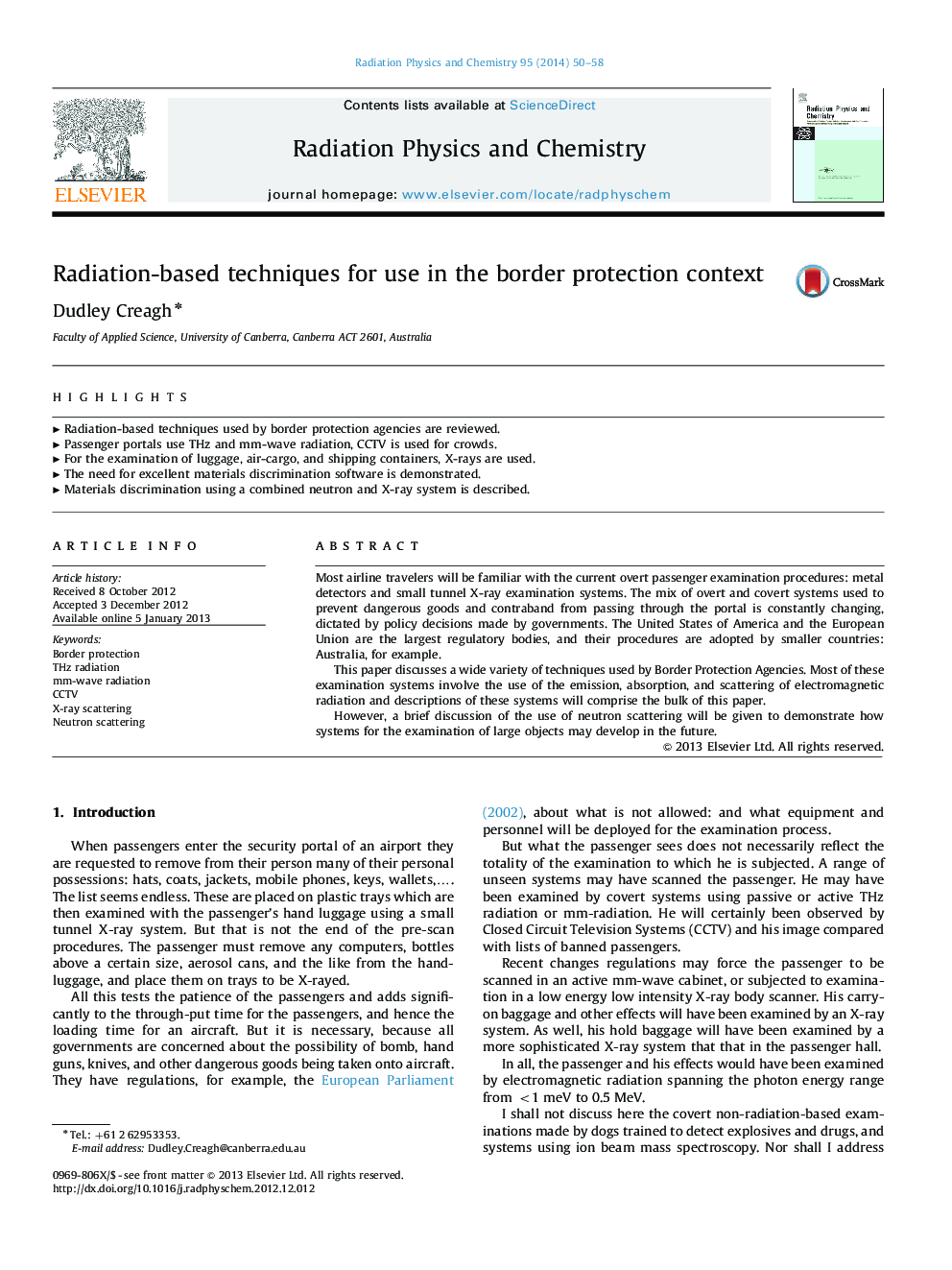| Article ID | Journal | Published Year | Pages | File Type |
|---|---|---|---|---|
| 1882398 | Radiation Physics and Chemistry | 2014 | 9 Pages |
Most airline travelers will be familiar with the current overt passenger examination procedures: metal detectors and small tunnel X-ray examination systems. The mix of overt and covert systems used to prevent dangerous goods and contraband from passing through the portal is constantly changing, dictated by policy decisions made by governments. The United States of America and the European Union are the largest regulatory bodies, and their procedures are adopted by smaller countries: Australia, for example.This paper discusses a wide variety of techniques used by Border Protection Agencies. Most of these examination systems involve the use of the emission, absorption, and scattering of electromagnetic radiation and descriptions of these systems will comprise the bulk of this paper.However, a brief discussion of the use of neutron scattering will be given to demonstrate how systems for the examination of large objects may develop in the future.
► Radiation-based techniques used by border protection agencies are reviewed. ► Passenger portals use THz and mm-wave radiation, CCTV is used for crowds. ► For the examination of luggage, air-cargo, and shipping containers, X-rays are used. ► The need for excellent materials discrimination software is demonstrated. ► Materials discrimination using a combined neutron and X-ray system is described.
